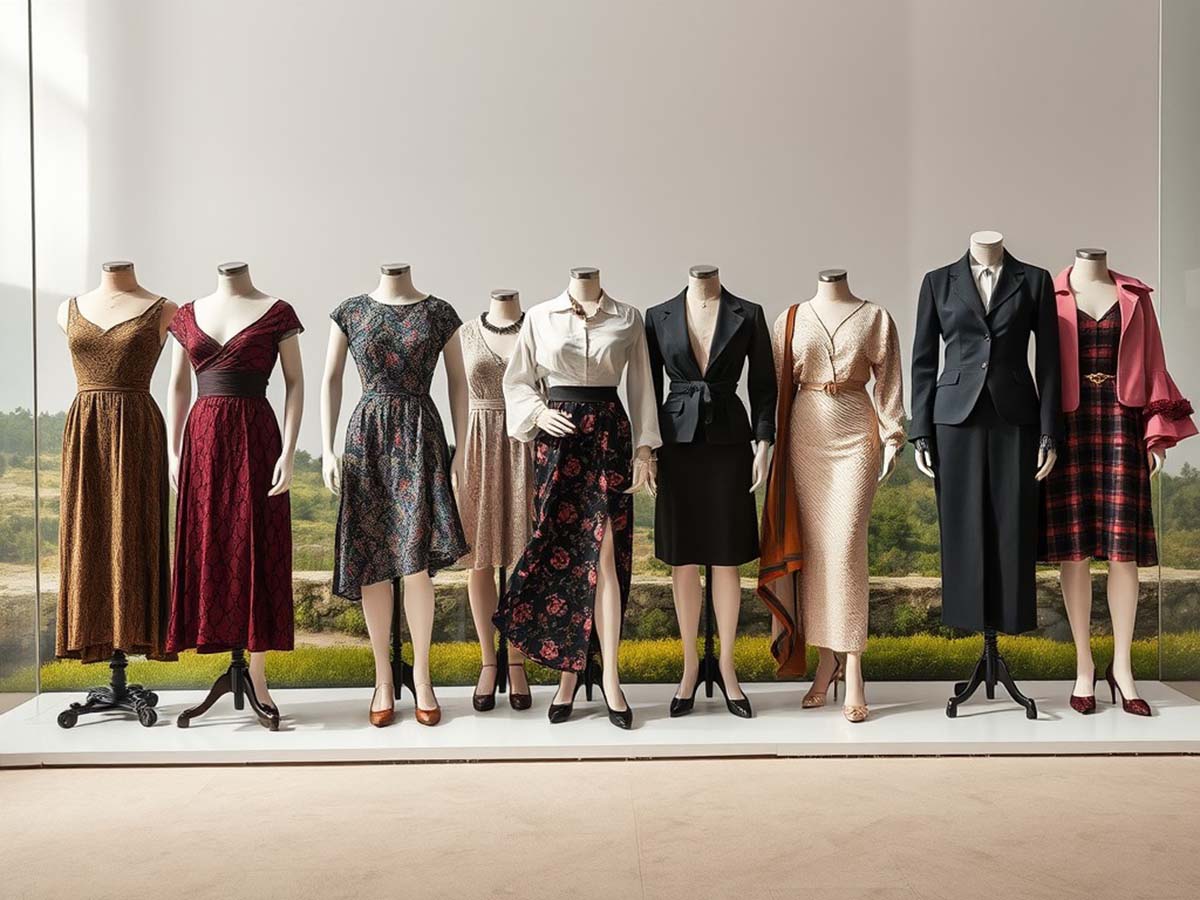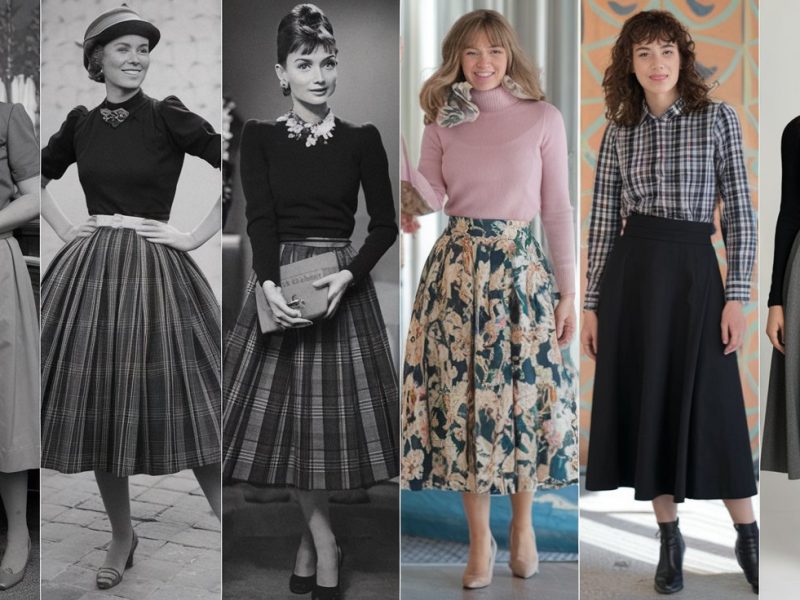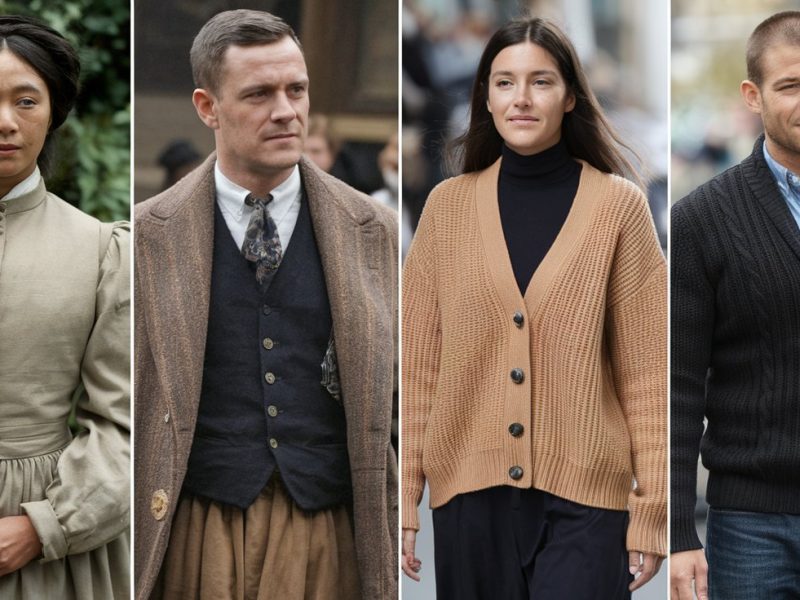1920s: The Era of Flappers
The 1920s marked an extraordinary turning point in women’s fashion, driven by rapid societal transformation following World War I. The end of the war brought about a wave of optimism and social liberation, which reflected vividly in clothing trends. This decade saw the abandonment of tightly structured corsets and cumbersome garments, replaced by simpler, freer silhouettes that embodied a more modern lifestyle.
Flapper dresses emerged as the defining style of the era, characterized by loose, straight-lined designs with dropped waists. These garments allowed for greater mobility, symbolizing newfound independence and a rebellion against societal expectations. Shorter hemlines—often just below the knee—were revolutionary, breaking away from the restrictive traditions of earlier decades. Fabrics such as silk and satin became popular, often adorned with intricate beading and fringe to create a dynamic effect during movement.
The rise of jazz music and the popularity of speakeasies heavily influenced the fashion scene. Women’s clothing became bolder, reflecting the vibrant energy of the times. Designers like Coco Chanel were instrumental in shaping this era’s aesthetic, focusing on comfort and simplicity. Chanel’s designs popularized jersey fabric and introduced the concept of sporty, chic attire that resonated with a generation seeking freedom in every aspect of life.
Accessories during this period played a pivotal role in completing the flapper look. Long strands of pearls, feathered headbands, and beaded clutches became staples. Bobbed hairstyles and bold makeup—including dark eyeliner and red lipstick—further emphasized the modern, daring persona of women in the 1920s. This decade was not merely a fashion statement; it was a cultural shift that redefined women’s roles in society and their representation in style. Evening wear, often adorned with sequins or intricate embroidery, further highlighted the glamour of this transformative era. The popularity of short, fringe-lined skirts created a dynamic silhouette that enhanced movement, especially while dancing to the rhythmic beats of jazz. Fashion during the 1920s transcended mere aesthetics, serving as an emblem of the societal changes brought about by the growing independence of women.
1950s: Golden Age of Glamour
By the 1950s, women’s fashion had entered a new phase of elegance and sophistication. The post-war economic boom, coupled with the influence of Hollywood, led to an era of glamorous, highly feminine styles. During this time, clothing celebrated the hourglass silhouette, emphasizing narrow waists, full skirts, and structured bodices. Designers like Christian Dior revolutionized the industry with his “New Look,” which highlighted luxurious fabrics and intricate tailoring.
The “New Look” featured nipped-in waists and voluminous skirts that exuded elegance. This style became synonymous with the decade’s aesthetic and was embraced by women across the globe. Materials like tulle, satin, and chiffon were often used to create evening gowns, while cotton and wool dominated casual attire. Dresses were commonly adorned with floral prints, polka dots, and pastel hues, reflecting the era’s romantic sensibilities.
Hollywood played an instrumental role in shaping fashion trends during the 1950s. Actresses such as Audrey Hepburn and Grace Kelly became style icons, influencing women’s choices in clothing, accessories, and hairstyles. Hepburn’s timeless black dress in Breakfast at Tiffany’s epitomized sophistication, while Kelly’s polished, graceful style set the standard for formal wear. Films of the era often depicted leading ladies in glamorous wardrobes, further cementing Hollywood’s influence on global fashion.
Ready-to-wear collections gained popularity during this decade, bridging the gap between high fashion and accessibility. Department stores became a hub for women seeking elegant yet affordable clothing. Accessories such as gloves, pearl necklaces, and structured handbags were considered essential for completing an outfit. Hats, often adorned with veils or decorative accents, added an extra layer of refinement to formal ensembles.
Hairstyles and makeup trends also reflected the era’s emphasis on polished beauty. Soft curls, perfectly styled waves, and elegant updos were common, while cosmetics focused on enhancing natural features with rosy cheeks, winged eyeliner, and red lips. The 1950s celebrated traditional femininity, blending opulence with practicality to meet the needs of a thriving middle class. This decade’s fashion also reflected a sense of optimism and stability, as women embraced styles that exuded confidence and sophistication. Formal attire became an essential part of everyday life, with cocktail dresses and tailored suits symbolizing the societal importance of appearance and decorum. The decade’s influence continues to resonate, with retro-inspired designs often appearing on modern runways.
Contemporary Fashion Trends
Today’s fashion scene is a dynamic tapestry of influences, drawing inspiration from past decades while embracing modern innovation. The evolution of women’s clothing has reached a point where individuality and self-expression take precedence over rigid trends. Designers now create pieces that cater to diverse tastes, body types, and cultural backgrounds, reflecting a more inclusive approach to style.
Contemporary fashion borrows heavily from the minimalist designs of the 1920s and the dramatic flair of the 1950s. Sleek, monochromatic outfits—characterized by clean lines and understated elegance—reflect the simplicity of the flapper era, while bold patterns, tailored silhouettes, and luxurious fabrics pay homage to the glamour of mid-century fashion. Vintage-inspired pieces often find their way into modern wardrobes, reinterpreted to suit current preferences.
Sustainability has emerged as a significant focus in contemporary clothing, reshaping the industry’s priorities. Ethical production methods and eco-friendly fabrics are becoming the norm, driven by growing awareness of environmental issues. Second-hand shopping and upcycled materials have gained traction, allowing consumers to make environmentally conscious choices without compromising style. Brands are increasingly transparent about their sourcing practices, aligning with the values of a socially aware generation. This emphasis on sustainability marks a paradigm shift in how fashion is consumed, with consumers increasingly valuing longevity over disposability.
Streetwear has become a dominant force in modern fashion, blurring the lines between casual and high-end design. This trend incorporates oversized pieces, graphic prints, and athletic elements to create versatile, edgy looks. Sneakers, once relegated to athletic wear, now serve as statement pieces that elevate everyday outfits. The rise of athleisure further underscores the shift toward comfort and practicality without sacrificing aesthetic appeal. Popular culture, driven by music and media, continues to fuel the popularity of streetwear, making it a significant influence on mainstream fashion.
Accessories in contemporary fashion reflect the same spirit of individuality and creativity. Chunky jewelry, oversized tote bags, and statement sunglasses are popular choices for those looking to add flair to their outfits. Layering different textures, patterns, and colors allows for endless possibilities, empowering wearers to craft unique styles that resonate with their personalities. Minimalist jewelry and bold statement pieces coexist in today’s wardrobes, highlighting the versatility of contemporary trends.
Technology has also played a transformative role in shaping modern fashion. Digital platforms such as Instagram and TikTok have become influential spaces where trends are born and shared globally. Social media fosters a sense of community among fashion enthusiasts, allowing for the rapid exchange of ideas and inspiration. Online shopping has revolutionized how consumers access clothing, offering convenience and a vast array of options at their fingertips. Virtual try-on technology and AI-driven recommendations are further enhancing the shopping experience, ensuring consumers find pieces that align with their tastes and preferences.
The integration of wearable technology into fashion has opened new possibilities for functionality and innovation. Smart textiles that monitor health, adapt to temperature changes, or incorporate LED displays showcase the potential of merging technology with clothing. These advancements not only enhance utility but also reflect the industry’s forward-thinking approach. Tech-infused accessories, such as smartwatches and AR-enabled eyewear, demonstrate the seamless blend of style and innovation that defines modern fashion.
Despite the focus on modernity, contemporary fashion continues to honor its roots by drawing on historical influences. Runways frequently feature reimagined versions of classic styles, blending traditional elements with fresh interpretations. This seamless integration of past and present ensures that fashion remains a dynamic, ever-evolving art form, capable of reflecting both personal identity and broader cultural shifts. Designers increasingly collaborate with heritage brands to revive archival pieces, celebrating the timeless appeal of iconic designs.
As fashion moves forward, its trajectory highlights the importance of adaptability and innovation. From the bold liberation of the 1920s to the elegance of the 1950s and today’s emphasis on inclusivity and sustainability, the journey of women’s clothing reflects a deeper narrative of societal progress and creativity. Each era contributes a unique chapter to the story of fashion, ensuring its relevance and allure for generations to come. Women’s fashion continues to evolve, weaving together the threads of history and modernity to craft a future rich in style and substance.


